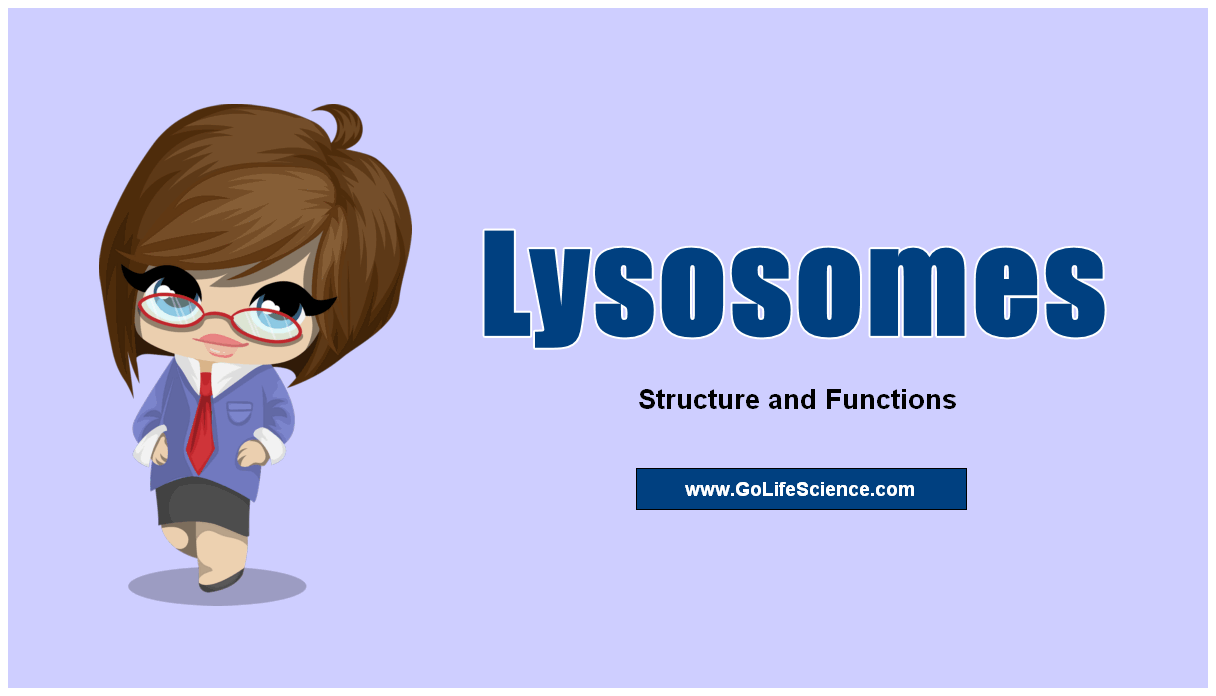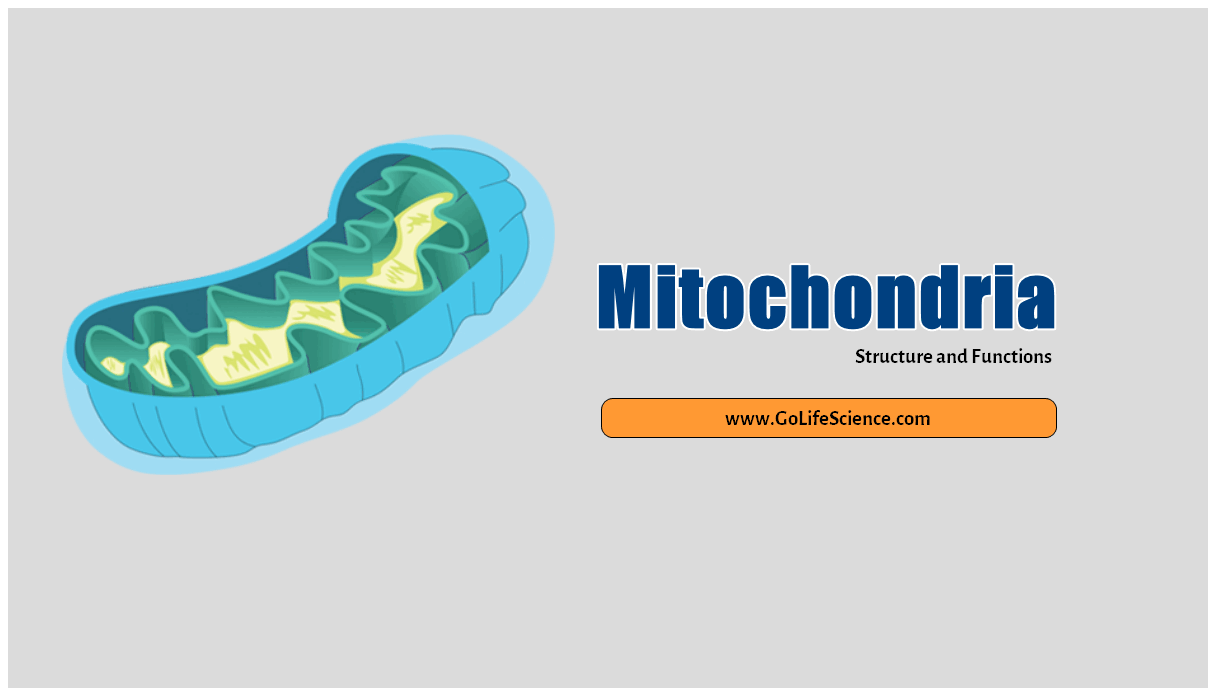
Lysosomes (Laso = dissolving; some = body) are membrane-bound spherical organelles containing lysosomal enzymes, that are hydrolytic in nature. Important enzymes present in the lysosome are acid hydrolases, proteases, lipases, and acid phosphatases. Let us see why lysosomes are called “suicidal bags of the cell.”
Lysosomes are small, spherical organelles found in the cytoplasm of eukaryotic cells. They are filled with a variety of digestive enzymes that are responsible for breaking down and recycling various types of biomolecules, including proteins, lipids, and carbohydrates.
Lysosomes play a crucial role in maintaining the health and function of the cell by helping to eliminate waste and damaged material. They are made by the Golgi apparatus and sent to different parts of the cell, where they release enzymes that break down and reuse materials.
Dysfunction or deficiency of lysosomal enzymes can lead to a variety of diseases, including lysosomal storage disorders. Understanding how lysosomes work and what they do is important for understanding how cells work and staying healthy as a whole.

These enzymes are capable of digesting organic molecules like lipids, proteins, nucleic acids, and polysaccharides under acidic conditions. So these are called “Suicidal Bags.”
De dive first described there in 1949. Almost all cells contain lysosomes but their number is much increased in the cells involved in the process of phagocytosis except erythrocytes.
Table of Contents
Structure of Lysosomes
The basic structure of a lysosome is a small, spherical organelle found in the cytoplasm of eukaryotic cells. It is surrounded by a single membrane, which is composed of a phospholipid bilayer similar to the cell membrane.
- Inside the lysosome are many hydrolytic enzymes. These are special proteins that can break down and recycle different types of biomolecules, such as proteins, lipids, and carbohydrates.
- Lysosomes are formed by the Golgi apparatus, which is an organelle found in the cytoplasm of eukaryotic cells that is responsible for sorting and modifying proteins and lipids as they are transported throughout the cell.
- The Golgi apparatus produces lysosomes by forming vesicles, which are small, spherical structures that are used to transport substances within the cell.
- These vesicles contain lysosomal enzymes and are moved to different parts of the cell, where they release their enzymes to break down and recycle things.
- In addition to hydrolytic enzymes, lysosomes also contain other types of enzymes, such as oxidases and transferases, which are involved in various biochemical reactions within the cell.
- They also contain small amounts of ribosomes, which are the site of protein synthesis in the cell, and mitochondria, which are the cell’s energy-producing organelles.
Types of Lysosomes and its formation
Lysosomes are small, spherical organelles found within the cytoplasm of eukaryotic cells. They are important for keeping molecules in the cell in balance and for recycling and breaking down waste. There are several types of lysosomes, including:
- Primary lysosomes: These lysosomes are formed by the fusion of vesicles containing hydrolytic enzymes with the Golgi apparatus. They contain a variety of hydrolytic enzymes that can break down a wide range of biomolecules, including proteins, carbohydrates, and lipids.
- Secondary lysosomes: These lysosomes are formed when primary lysosomes fuse with phagocytosed material, such as bacteria or damaged cell organelles. They have the same kinds of hydrolytic enzymes as primary lysosomes and are involved in the process of phagocytosis.
- Autophagic lysosomes: These lysosomes are involved in the process of autophagy, which is the process by which cells recycle their own components. When a cell eats its own organelles or other parts of itself and moves them to the lysosome to be broken down, this is called autophagy.
- Residual body lysosomes: These lysosomes are formed when a cell is unable to completely degrade or recycle the material it has phagocytosed. The material that hasn’t broken down is then put into a body called a “residue,” which is eventually sent out of the cell.
- Lipid droplet lysosomes: These lysosomes are involved in the storage and breakdown of lipids. They contain enzymes that can hydrolyze lipids, as well as proteins that help regulate the synthesis and degradation of lipids.
Other forms of Lysosomes
- Phagosomes: When the primary lysosome fuses with a specialized white blood cell, the phagocytes, an activated phagosome or phagocytic vesicles formed. They fight against a pathogen by engulfing them very rapidly than the ordinary phagocytes.
- Autophagic vacuoles: During starvation or after the destruction of cell components especially the liver cells and cells destroyed during metamorphosis fuse with the primary lysosome to form autophagic vacuoles or autolysosomes.
Functions of Lysosomes
Lysosomes are small, spherical organelles found within the cytoplasm of eukaryotic cells. They are important for keeping molecules in the cell in balance and for recycling and breaking down waste. The main functions of lysosomes are:
- Degradation of waste materials: Lysosomes contain hydrolytic enzymes that can break down a wide range of biomolecules, including proteins, carbohydrates, and lipids. This allows the cell to recycle and reuse these molecules as well as remove waste materials that can be harmful to the cell.
- Phagocytosis: Lysosomes are involved in the process of phagocytosis, which is the process by which cells engulf and take in external material, such as bacteria or damaged cell organelles. When a cell eats something through phagocytosis, the food is taken to a lysosome where it is broken down.
- Autophagy: Autophagy is the process by which cells recycle their own components. Autophagic lysosomes are formed when the cell engulfs its own organelles or other cellular material and transports it to the lysosome for degradation.
- Lipid metabolism: Some lysosomes are specialised for the storage and breakdown of lipids. They contain enzymes that can hydrolyze lipids, as well as proteins that help to regulate the synthesis and degradation of lipids.
- Control of intracellular pH: Lysosomes are involved in the regulation of the pH of the cytoplasm. When hydrolytic enzymes in lysosomes break down biomolecules, they release protons. This can help keep the pH of the cell acidic.
Lysosomal Storage Disorders
Lysosomes are small, spherical organelles found within the cytoplasm of eukaryotic cells that are involved in the degradation and recycling of waste materials. This is a group of more than 50 rare diseases. It affects the structure of lysosomes in the cell. It breaks down substances such as carbohydrates, proteins, and other cellular parts.
They contain a variety of hydrolytic enzymes that can break down a wide range of biomolecules, including proteins, carbohydrates, and lipids. Lysosomal storage diseases happen when one or more of these enzymes are missing or don’t work right. This makes the lysosome store materials that haven’t been broken down yet.
This buildup can lead to a wide range of symptoms, such as organ failure, delayed development, and the breakdown of tissues and organs. Some examples of lysosomal storage diseases include:
- Gaucher disease: This disease is caused by a deficiency of the enzyme glucocerebrosidase, which leads to the accumulation of glucocerebroside in the lysosomes of cells. Symptoms can include anemia, easy bruising, fatigue, and an enlarged liver and spleen.
- Niemann-Pick disease: This disease is caused by a deficiency of the enzyme sphingomyelinase, which leads to the accumulation of sphingomyelin in the lysosomes of cells. Symptoms can include developmental delays, impaired motor skills, and an enlarged liver and spleen.
- Pompe disease: This disease is caused by a deficiency of the enzyme alpha-glucosidase, which leads to the accumulation of glycogen in the lysosomes of cells. Symptoms can include muscle weakness, difficulty breathing, and an enlarged liver and spleen.
- Fabry disease: This disease is caused by a deficiency of the enzyme alpha-galactosidase A, which leads to the accumulation of globotriaosylceramide in the lysosomes of cells. Symptoms can include pain in the hands and feet, red or pale patches on the skin, and kidney problems.
- Tay-Sachs disease: This disease is caused by a deficiency of the enzyme hexosaminidase A, which leads to the accumulation of gangliosides in the lysosomes of cells. Some of the signs are slow development, weak muscles, and a red spot in the middle of the eye.
Some other disorders
| Disease | Enzyme deficiency | Affected areas |
| Metachromatic leukodystrophy (MLD) | arylsulfatase A | They destroy the myelin coating that surrounds and protects nerve cells |
| Mucopolysaccharidosis (MPS) | – | This a group of diseases that affects enzymes that break down certain carbohydrates. |
| Niemann-Pick disease | Types A and B, people lack an enzyme called acid sphingomyelinase (ASM).
Type C, the body can’t break down cholesterol and fats in cells | Liver, Spleen, and Brain |
Lysosomes are cytoplasmic organelles whose main function, in the eukaryotic cell, is intracellular and extracellular digestion. They are distinct in their morphology and in the functions they perform.
About 50 lysosomal hydrolases, capable of digesting most of the biological substances, generally acting as acid pH, are known at present. They are known to occur in protozoa, animals, and plants.
The lysosomes are stable in the living cell; enclosed by a membrane, the enzymes are not available to their substrates.






